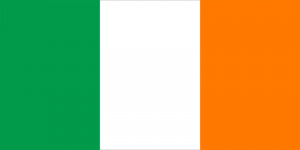Language/Irish/Grammar/Pronouns
Hi Irish learners! 😊
In this lesson, we will be discussing Irish pronouns. Pronouns are an essential part of any language, and Irish is no exception. They allow us to refer to people, places, and things without repeating the noun every time we use it. In Irish, as in English and other languages, there are different types of pronouns, such as personal, possessive, interrogative, and demonstrative pronouns. We will cover each of these categories in detail in this lesson. For more information about Irish grammar, check out the Polyglot Club website.
Finish this lesson and explore these related pages: Irish Prepositional Pronouns, Imperative Mood, How to Use Be & Future Tense.
Personal Pronouns[edit | edit source]
Personal pronouns are words that we use to replace the names of people or things. In Irish, personal pronouns change depending on the context of the sentence. Let's take a look at some examples:
| Irish | Pronunciation | English |
|---|---|---|
| mé | may | I |
| tú | too | you (singular) |
| sé | shay | he |
| sí | she | she |
| sinn | shin | we |
| sibh | shiv | you (plural or formal) |
| siad | shee-udh | they |
Dialogue:
- Person 1: Dia duit! Conas atá tú? (Hello! How are you?)
- Person 2: Tá mé go maith, go raibh maith agat. (I'm well, thank you.)
As we can see, the personal pronoun "mé" means "I," "tú" means "you" (singular), and "sé" means "he." Similarly, "sí" means "she," "sinn" means "we," "sibh" means "you" (plural or formal), and "siad" means "they."
Possessive Pronouns[edit | edit source]
Possessive pronouns are used to show ownership or possession. In Irish, possessive pronouns come before the noun they modify. Here are some examples:
| Irish | Pronunciation | English |
|---|---|---|
| mo | muh | my |
| do | duh | your (singular) |
| a | uh | his/her/its |
| ár | awr | our |
| bhur | vuhr | your (plural or formal) |
| a | uh | their |
Dialogue:
- Person 1: An bhfuil do leabhar agat? (Do you have your book?)
- Person 2: Tá, tá mo leabhar agam. (Yes, I have my book.)
In this example, the possessive pronoun "do" means "your" (singular), and "mo" means "my."
Interrogative Pronouns[edit | edit source]
Interrogative pronouns are used to form questions. In Irish, the most common interrogative pronouns are "cé" and "cad." "Cé" is used to ask about a person, while "cad" is used to ask about a thing. Here are some examples:
| Irish | Pronunciation | English |
|---|---|---|
| Cé | kay | Who |
| Cad | kadh | What |
Dialogue:
- Person 1: Cé atá ann? (Who is there?)
- Person 2: Is mise Mary. (It's me, Mary.)
In this example, the interrogative pronoun "cé" means "who."
Demonstrative Pronouns[edit | edit source]
Demonstrative pronouns are used to indicate which noun is being referred to. In Irish, there are two types of demonstrative pronouns: "seo" and "siúd." "Seo" is used to refer to something that is close by, while "siúd" is used to refer to something that is far away. Here are some examples:
| Irish | Pronunciation | English |
|---|---|---|
| seo | shuh | this |
| siúd | shee-oodh | that |
Dialogue:
- Person 1: An bhfuil tú ag labhairt faoi seo? (Are you talking about this?)
- Person 2: Níl, tá mé ag labhairt faoi siúd. (No, I'm talking about that.)
In this example, the demonstrative pronoun "seo" means "this," while "siúd" means "that."
That's it! We've covered personal, possessive, interrogative, and demonstrative pronouns in Irish. Of course, there is more to learn, but this is a good start. If you have any questions, please ask them in the comments section below.
➡ Feel free to edit this wiki page if you think it can be improved. 😎
Sources[edit | edit source]
- Irish grammar - Wikipedia
- Irish Pronouns: An Easy Guide To The 4+ Types - Ling App
- Appendix:Irish pronouns - Wiktionary
Videos[edit | edit source]
11 USEFUL VERBS in IRISH language + PRONOUNS - YouTube[edit | edit source]
Learn Irish-Lesson 23 Prepositions 3 (Prepositional Pronouns ...[edit | edit source]
Other Lessons[edit | edit source]
- Future Tense
- Conditional Mood
- Irish Modal Verbs (need, want, must, can)
- Personal pronouns
- Imperative Mood
- Negation
- Irish Prepositional Pronouns
- Plurals
- Questions

